It was Mother’s Day when I had Pachamanca for the second time. This ancient traditional delicacy is believed to be originated even before the Incas. In Quechua, ‘Pacha’ means earth and ‘manca’ means a pot. I have never heard of it before, but it reminded me of a different cooking technique we have in rural India where we used to cook using clay pots in a somewhat similar fashion.
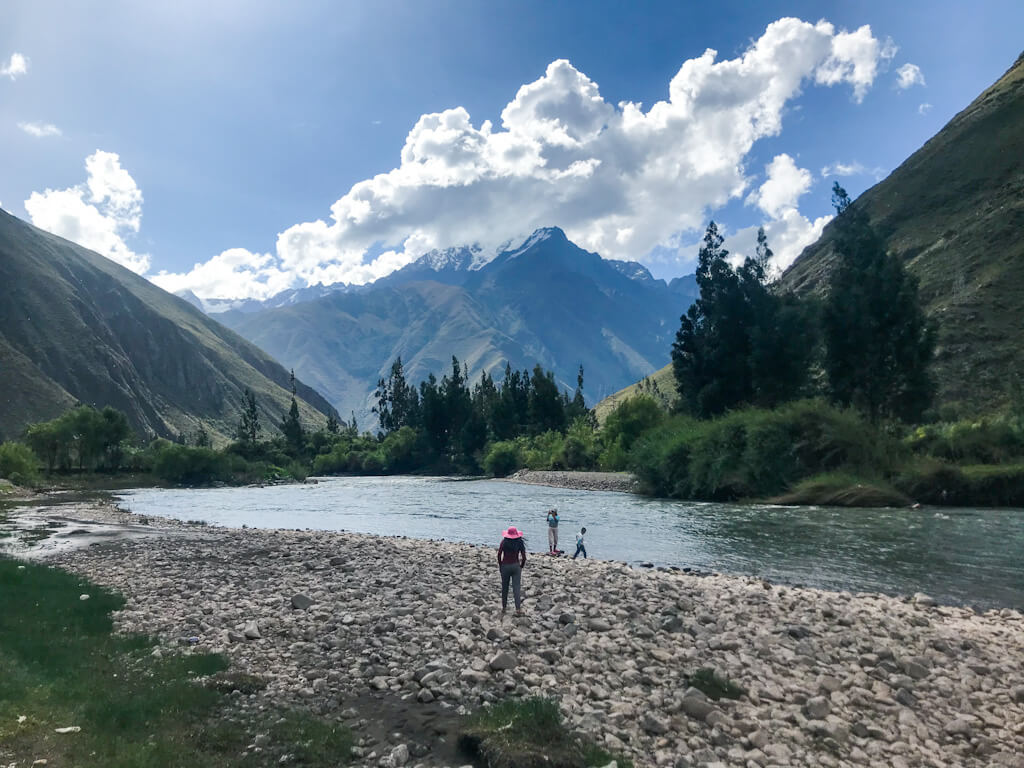
When the Peruvian government enforced a lockdown, I was on an island in Lake Titicaca with my partner. We’d make a difficult 7-day journey to reach her home amidst all the uncertainties. I would find myself in a small village in the Sacred Valley – Kachi Ccata, where I had my first Pachamanca. Life in Kachi Ccata didn’t need reasons to celebrate, but a few family members returning home after a long time called for a Pachamanca, and I was fortunate enough to be present.
Also read: Lost in Peru – Riding on the kindness of people.
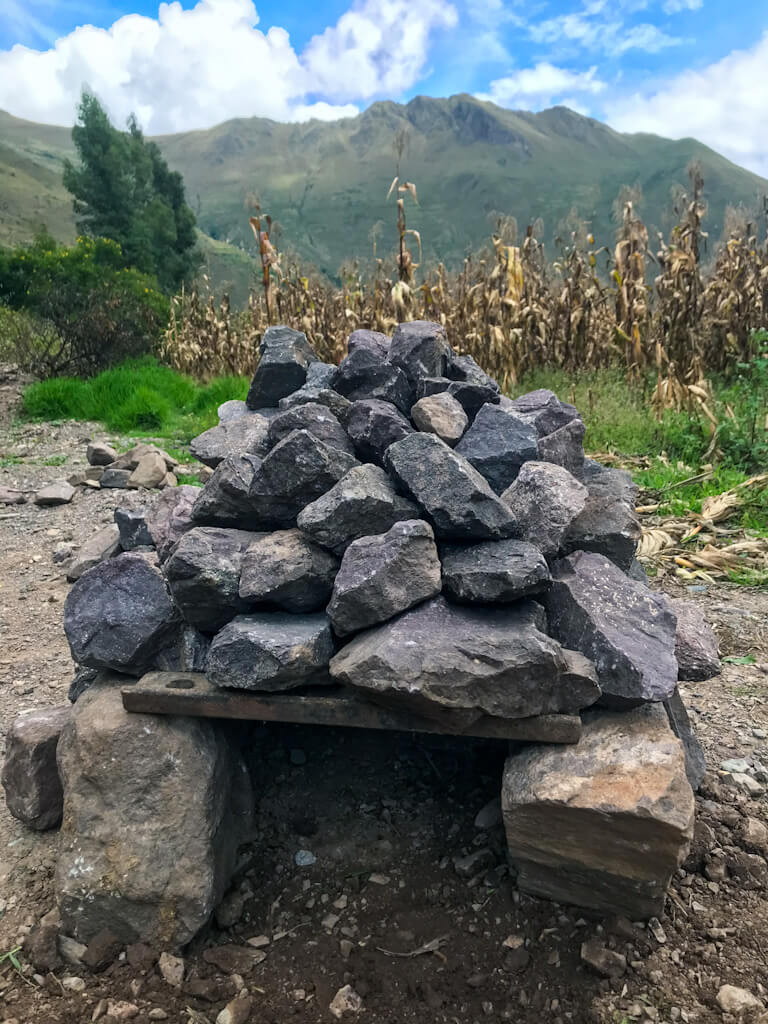
The preparations and set up for Pachamanca were as incredible as the food itself. We started the process by creating a small oven made up of specific stones stacked in the shape of a dome. It was an intricate piece of architecture where the stones kept hanging onto one another without the use of any mortar or adhesives. The stones looked like they could collapse any time, but they didn’t. It resembled so many of the Inca buildings that I had come across so far in Peru, including Machu Picchu. As much as it was difficult for me to envision the structure, let alone the efforts; it was effortless for them to have it built in less than half an hour.
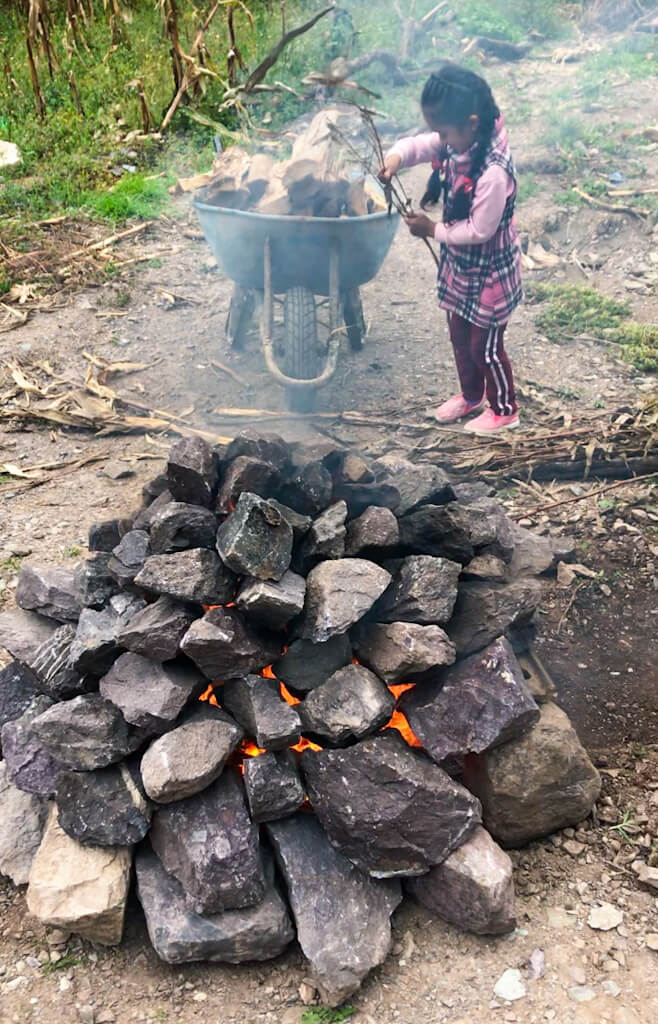
The oven had a small opening from where we inserted the firewood and kept it lit for about four hours until the stones were hot enough. We kept the fire alive by blowing air into the structure using a small hollow pipe. I have seen my grandma use the same technique to maintain the fire in India. Clouds of smoke and fire kept peeking out of the cracks between the rocks.
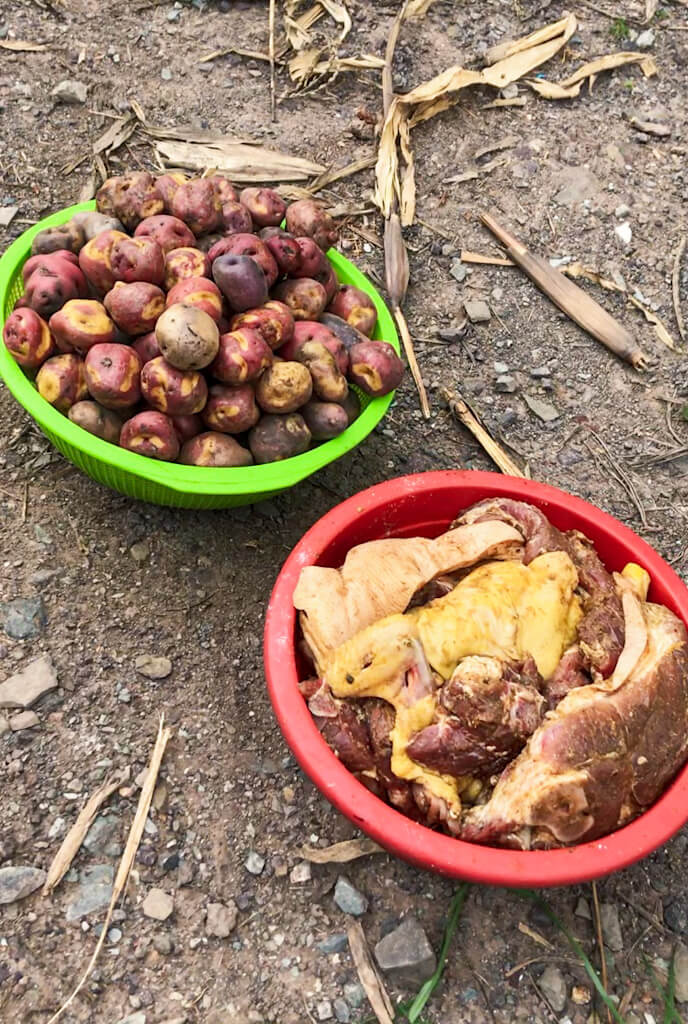
The food ingredients for Pachamanca vary depending upon the regions, but mostly they are meat and potatoes. While we were building the oven, chicken and pork were marinated with freshly picked local ingredients. We prepared aji – a sauce made with huacatay (South American marigold plant), coriander, garlic, parsley, peanuts, corn, chili, and salt. Aji was made with a traditional technique using specific stones called batán where all the ingredients placed on a designated rock and then crushed using another one.
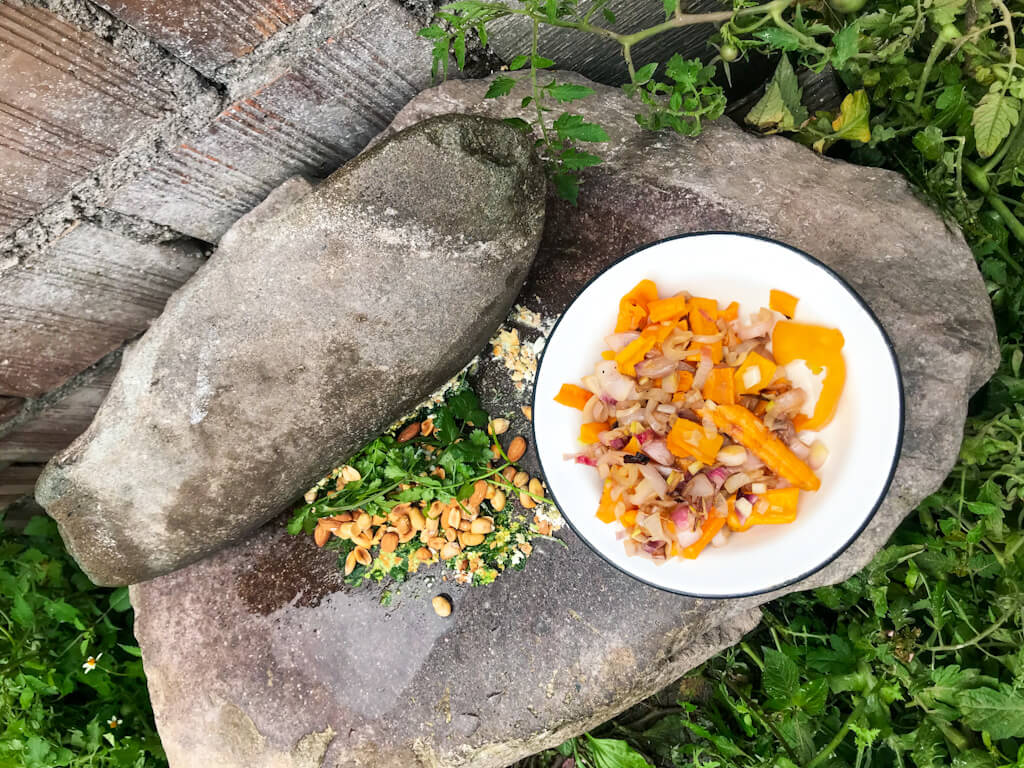
When the oven got to the right temperature, different kinds of potatoes and sweet potatoes are thrown into the dome above the charcoal layer. Then, the structure is broken apart in a way that we had a charcoal-potatoes-stones layer. We laid pork meat on top of that layer and covered it with more stones. We created the same layer with chicken after that and then on top of that we scattered habas (beans).
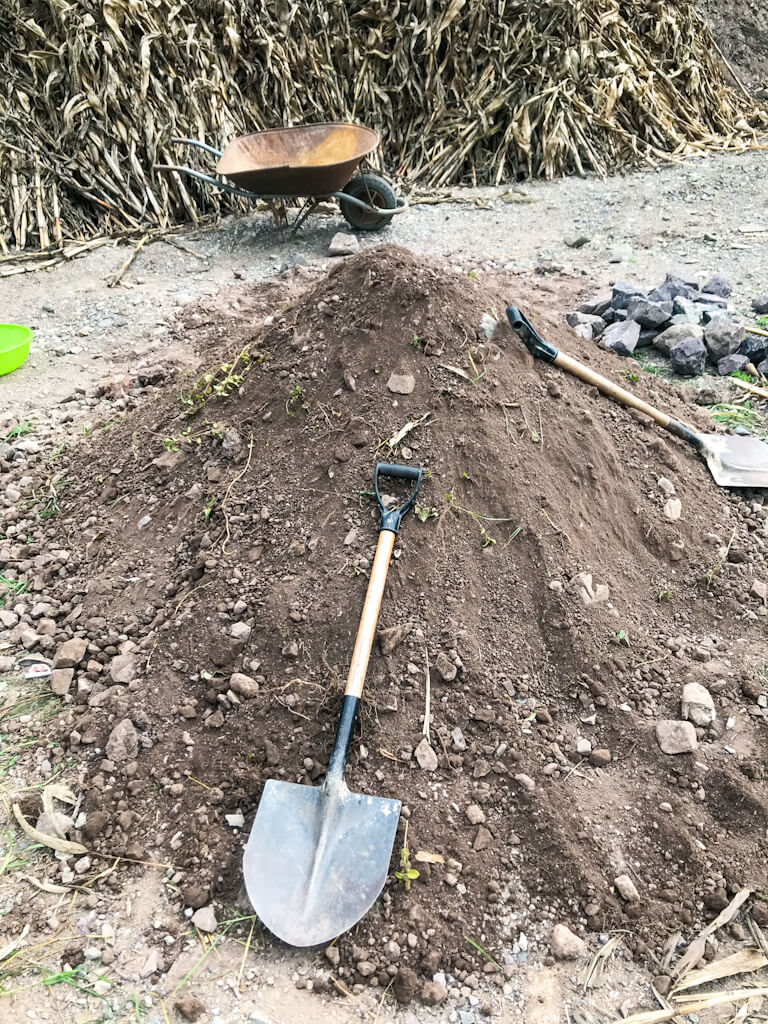
Later, a layer of specific pasto (grass) is spread all over the pile in order to contain the heat, at the same time adding its aromatic flavor to the food. We, then, used shovels to cover the whole heap in a way that no heat energy could escape. The same energy cooks food with the flavors of earth, grass, and rocks; something that I never experienced before. Meanwhile, my partner kept reminding me to work faster as we didn’t want the rocks to lose heat. This process of insulation is time-tested and passed down from generations.
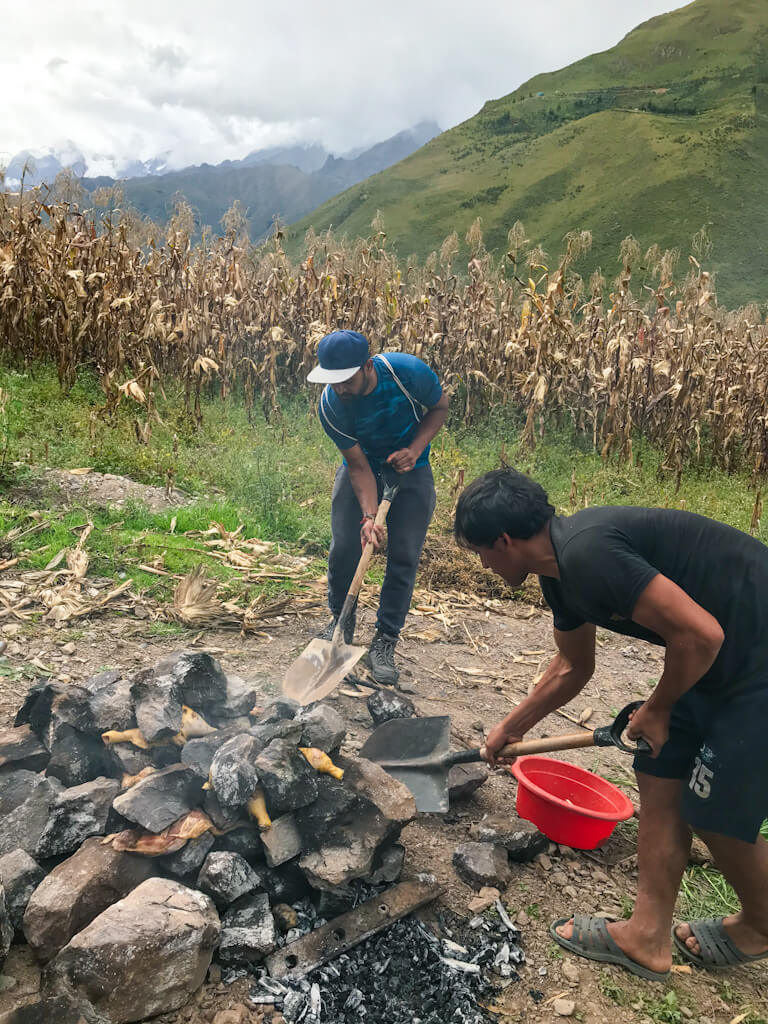
After waiting for about 40-50 minutes, we uncovered the layers one after the other, as unique smells populated the surroundings. The smoky and earthy flavors blended perfectly with tender meat as I tasted straight from the rocks. It was so delicious that I wondered if I’d ever experience the same flavors again in the future or not.
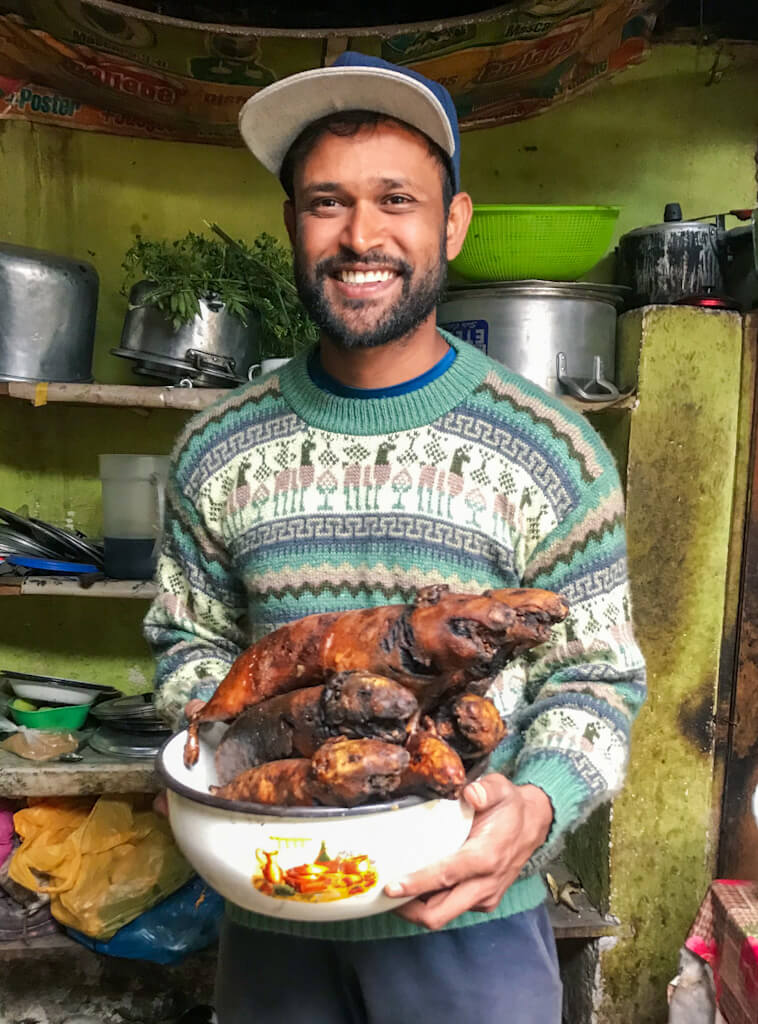
Meanwhile, another traditional delicacy was being prepared in the kitchen. Cuys (Guinea pigs) are considered festival food and are eaten on special occasions. In this part of the world, Cuys are raised in every household with utmost care, and I often saw kids playing and developing a connect with them. A few other side-dishes such as sausages, boiled banana, and Rocoto Relleno (stuffed green pepper) were prepared as well.
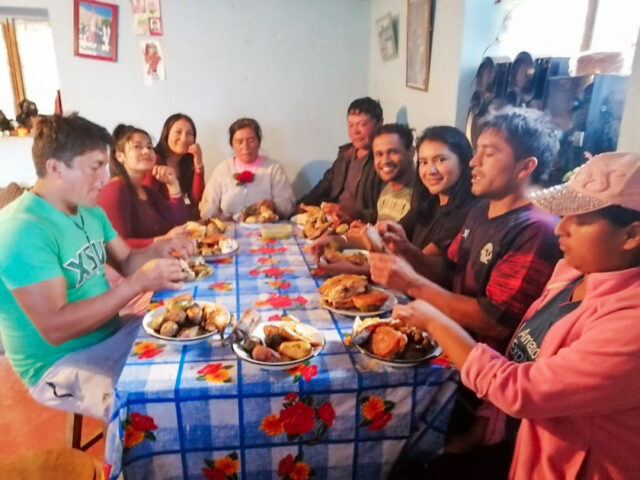
One pachamanca dinner serves the whole family, friends, and basically whoever shows up on that day. All these delicacies are then served on one plate together. The whole family usually sit together at the table and offer ‘Gracias’ before starting to eat. Later, Papa brought out a bottle of Trago – homemade high-percentage alcohol and poured them in a small glass as everyone took a shot one by one. I consider myself grateful to have had a chance to experience and live their life while carrying my own self-created identities.
What they speak, eat, or do in this part of the world is very different than what I do in my part of the world. ‘When in Rome, do as the Romans’ – is something I’ve been following for a long time, without being aware of it sometimes. However, when I let loose that self-restricting identity of mine, I happened to find plenty of similarities in the customs and rituals of this diversely rich culture with my own. I no longer felt the need to do as the Romans as I was figuring it out that regardless of our cultural differences, we were more similar than different. The celebrations had just begun!
Have you gathered any fascinating culinary experience anywhere in the world? Share your food-travels and insights in the comments below.
If you enjoyed reading this article, I would love for you to share it!
See Pachamanca stories on Instagram for videos.

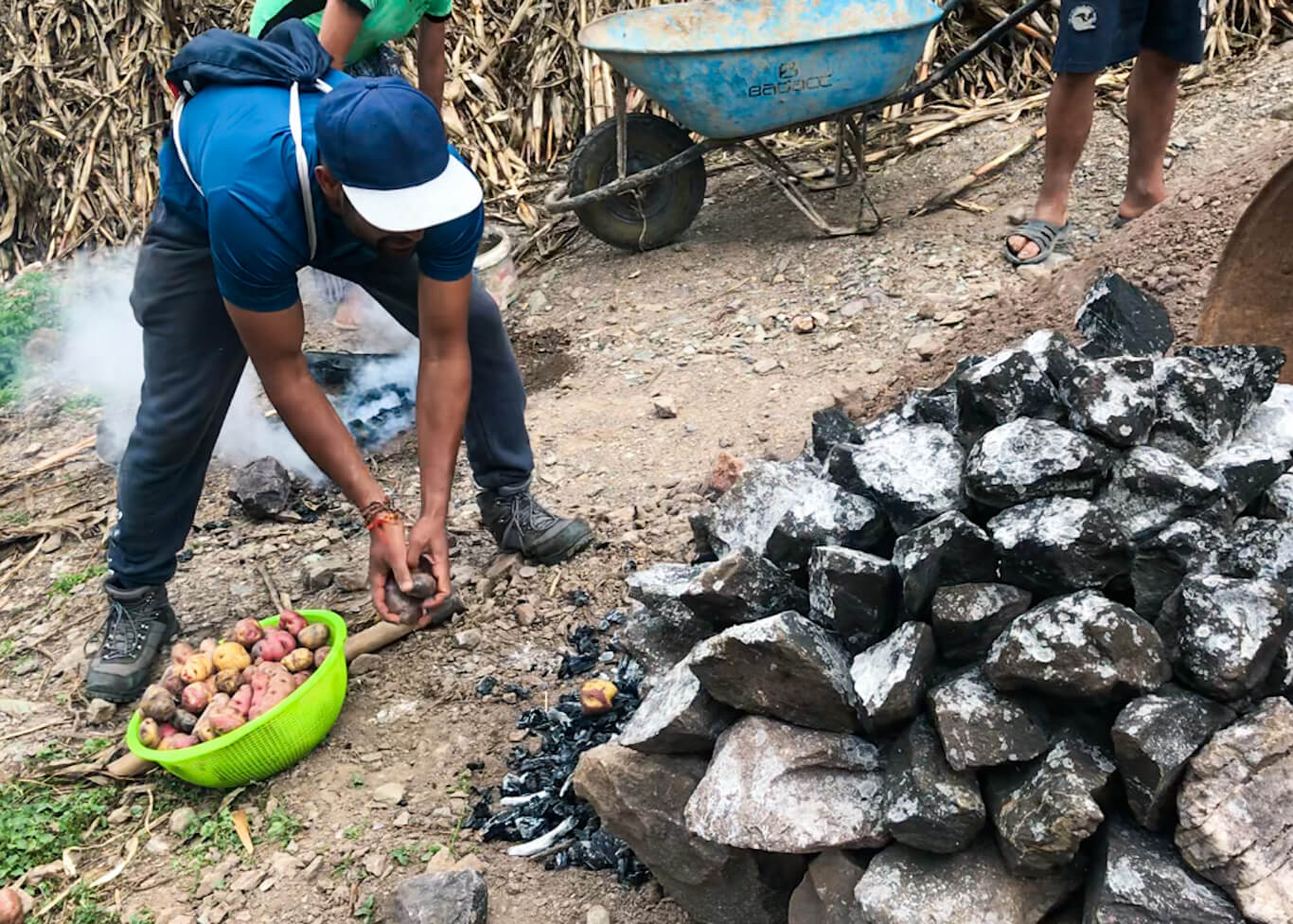
Described a very nice experience.
May be these were the golden days of life.
Keep it up.
More golden days ahead 😉🙌❤️
Well described 👍🏻🤘🤘🤘
🙌❤️
👍👍👍
🙌❤️
Lucky Monil! To have such a great culinary experience.. love to hear more from you.. good description… liked it
Thanks, Gopi.🙌❤️
Great experience Monil…very well described 👍😊
Thanks DG 🙌❤️
Born in the UK, brought up in India, living in Ireland, lost in Peru and paradoxically teaching a Peruvian (me) about her own culture. I never saw a Pachamanca prepare and I have only tried it in Lima, it is definitely not Pachamanca here. Your story is very nice. You are one more member of that family, I can feel it in the images. Fortunately we are all one; and we are remembering it. Thank you for telling your experiences, I know that with it you touch many souls and hearts
It’s riquisimo Veronika. 😋 Thank you for your comment. I think the purpose behind all the similar or different rituals is same everywhere. My time in Peru made me discover a lot about my own culture as well. 🙌 I always felt at home in Peru and grateful to have family and friends there. ❤️
Nice article. Keep it up. Have more fun & good experiences there. 👍
Thank you. 🙌❤️
Great read💯💯
🙌❤️
Good work bro keep it up
Cheers 🙌❤️
Wow monil bhai lovely ……love the technique,❣️
Yeah me, too. 🙌
👌👌👌☺️
🙌❤️
You have best day in your journey life brother so keep enjoy n stay happy 😊
Thank you bro 🙌❤️
Amazing👌
🙌❤️
Nice one 👍
Cheers 🙏
Very well written. Loved it 👍
Keep going 😊
Thanks Sai 🙌❤️
Its really amazing. The way you see the world . I m lucky to read , at the time m feel I ther .
Thank you very much. 🙌❤️
What better day to have pachamanca, than on Mother’s Day! Sourced from Mother Earth and cooked by Mother Earth! I’m not familiar with the Peruvian customs and traditions but all this sounds truly amazing!
And I didn’t know this relevance that time 🙈. I’ve been very fortunate 🙌❤️